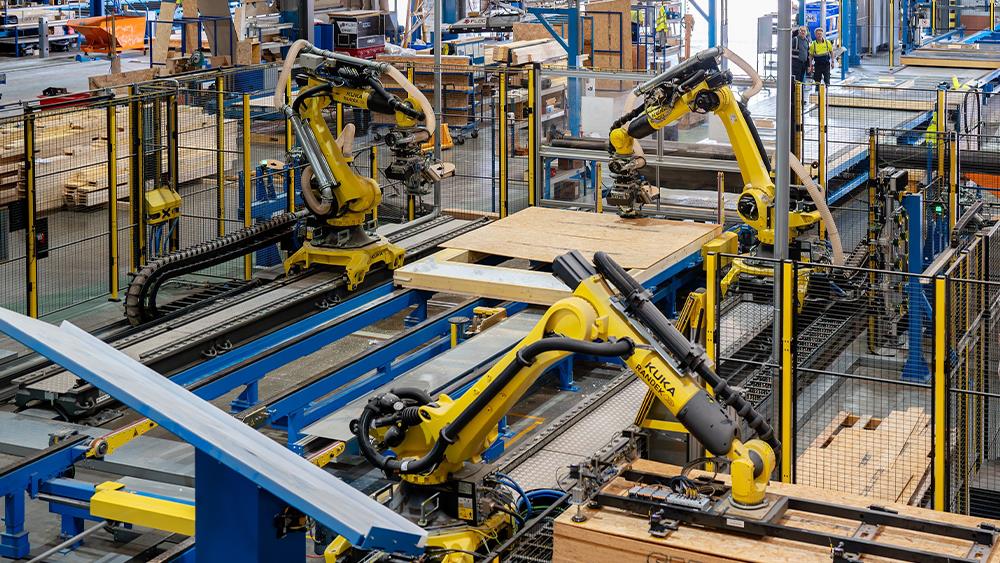

Offsite timber frame manufacturer Donaldson Timber Systems (DTS) has increased capacity and boosted technical capabilities at its Oxfordshire factory, following an investment of more than £10million.
The investment in machinery and performance upgrades at the Witney site includes four state of the art timber processing centres and a new floor panel production line offering customers a fully completed pre-glued floor cassette solution. The company has also installed what it says is the most advanced automated pre-insulated closed-panel wall production line in Europe.
The purpose of the machinery investments is to increase automation to improve efficiency and create additional capacity, which in turn eases the manual labour required and makes operative positions more inclusive. The acquisition of new technology also increases the factory’s technical capabilities so more advanced products for MMC can be manufactured with the quality assurance the industry demands.
Some of the pieces of technology were created specifically for DTS and have never been used before in the industry. Partnering with Randek on much of the machinery development, new techniques, and innovations, DTS ensured current and advanced elements of technology were used, including robotics and laser integration. The increased automation also reduces the requirements for paper drawings as plans are input digitally, further reducing carbon footprint.
Photovoltaic (PV) cells, or solar panels, have also been installed on the factory roof. They are expected to produce just under one megawatt of electricity, covering the factory’s own energy needs and an excess of green energy that will be exported to the national grid for other local businesses and homes to use. This significantly reduces the site’s environmental footprint and, combined with new electric vehicle charging points for staff and visitors, supports DTS’ sustainability goals.
Frank O’Reilly, Manufacturing Director at DTS, said: “The installation of this new machinery in a working factory is unusual for the industry and the process required a phenomenal amount of logistical planning over a period of a couple of years. We’re all really proud of the results. We’re creating the capacity and technical capabilities customers require to continue building more advanced and energy-efficient homes and buildings - and futureproofing our own business in the process.
“We’re also excited about what this means for our colleagues, as it is revolutionising the operations process. Now a less physically demanding role, we can hire a wider variety of people to work on site, helping to plug the current skills gap in construction. We’ve also hired people with an automation background from the automotive and engineering sectors to ensure we upskill our teams and are making the best use of our new capabilities. These efficiencies also provide an opportunity to increase production, creating more positions in time, and allowing us to redeploy people to more value-added roles.”
Rod Allan, Managing Director of DTS, said: “Timber is the only truly sustainable building material and we are well-respected in the industry for the quality of our products. But rather than rest on our laurels, we continue to look forward and innovate. We have created the scope to add more capacity and capabilities to the factory over time without the need for a large-scale overhaul like this one, and we have created a platform for more R&D.
“It has also made positive changes to our colleagues, as we have seen more people switch to electric vehicles thanks to the free charging points on site. This is a significant investment but one that will set us and our customers up for continued success in reducing carbon for years to come.”
Ola Lindh, Randek CEO, said: “Partnerships and collaborations lie at the heart of our mission at Randek. Prefabrication isn't just about constructing buildings; it's about co-creating solutions with our customers, refining their processes, and integrating our technology to drive efficiency and automation. This synergy not only makes housing more affordable but also paves the way for a sustainable future.”